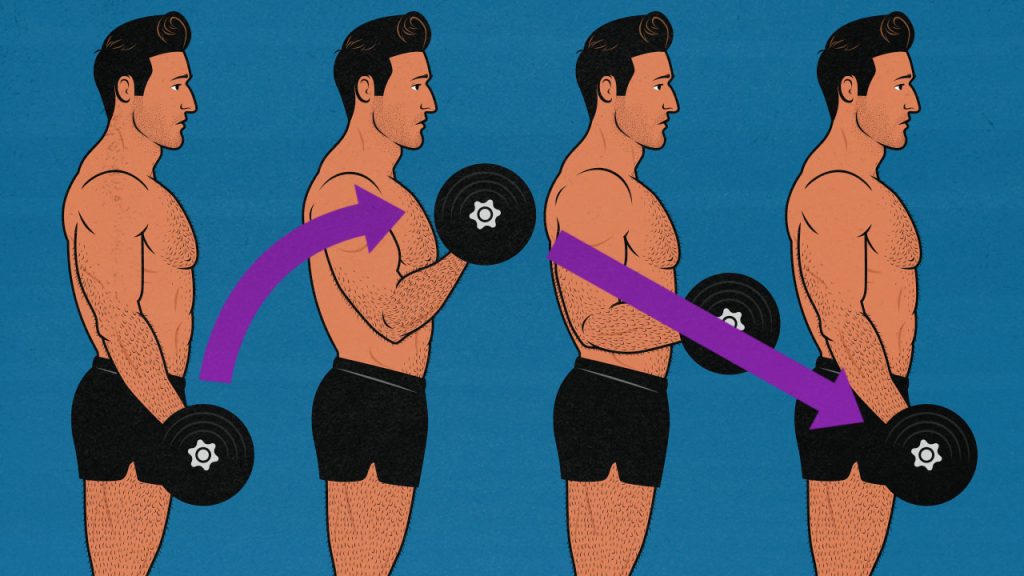
How Fast Should You Lift & Lower Weights?
If you lift weights slowly, you can keep tension on your muscles for longer, but you won’t be able to lift as heavy.
If you lift weights with a normal tempo, you can lift more weight, but you won’t be keeping tension on your muscles for as long.
If you lift weights fast, you’ll engage more muscle mass and increase your performance, but you’ll also increase momentum, and it will be harder to maintain a strong mind-muscle connection.
So, how fast should you be lifting and lowering weights? And how should your lifting tempo change if you’re training for strength, athletic performance, or muscle size?
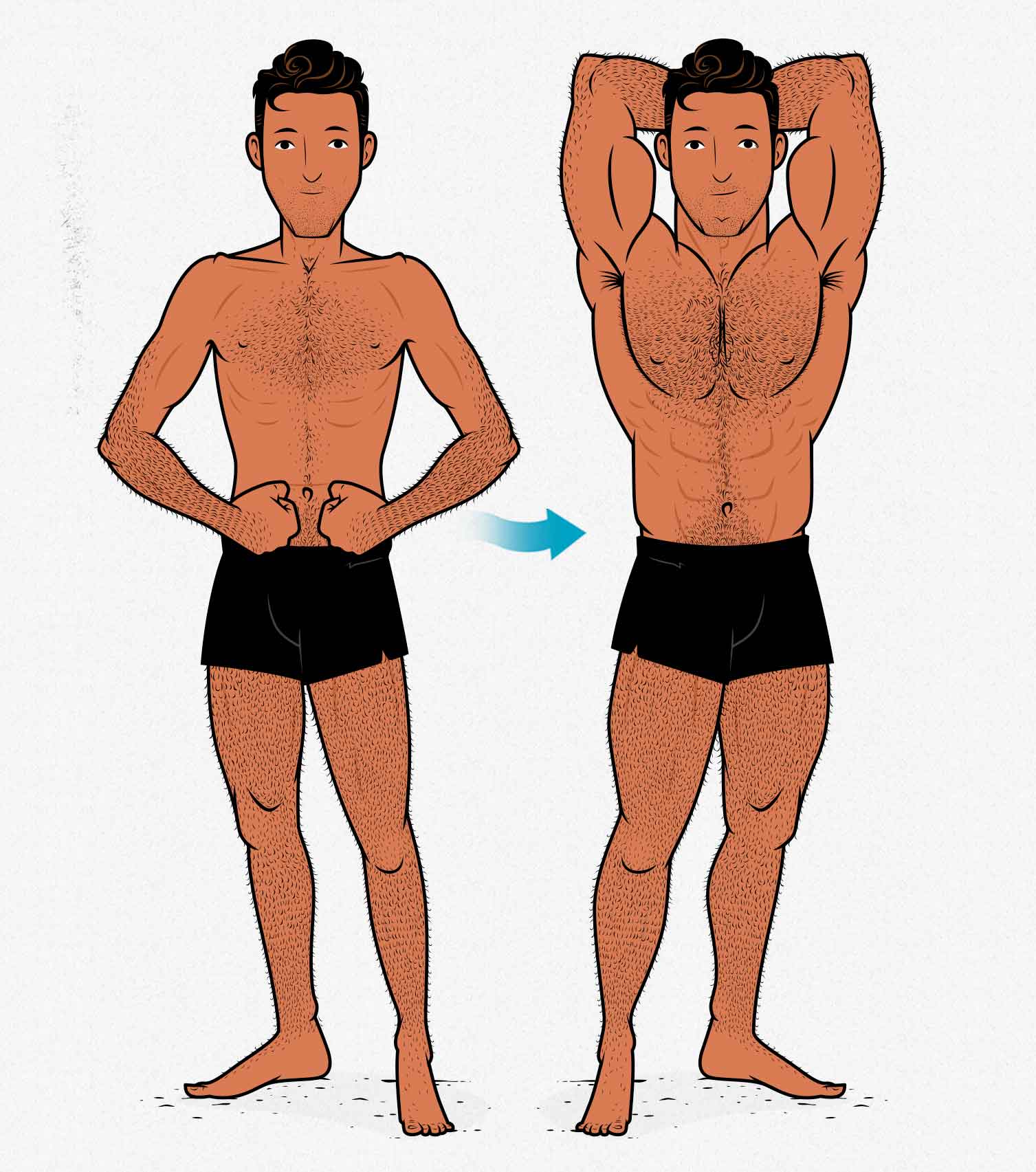
Video Version
If you’d rather watch than read, we’ve got a YouTube video covering everything you need to know about how lifting tempo affects strength, performance, and muscle growth:
Or, if you want to dive a bit deeper, we’ve included a couple of extra details and nuances in the article.
Is Lifting Slowly Good for Gaining Muscle?
If you lift weights slowly, you can keep tension on your muscles for longer, which is thought to be good for stimulating muscle growth. But lifting slowly reduces performance in a given repetition range, forcing you to lift lighter weights, and thus reducing the magnitude of that tension.
Slowing things down isn’t an advantage, it’s a tradeoff. You get more time under tension, but you also get less tension. Usually, the drop in performance is severe enough that you actually wind up getting less total tension on your muscles with every set. It winds up being a net negative.
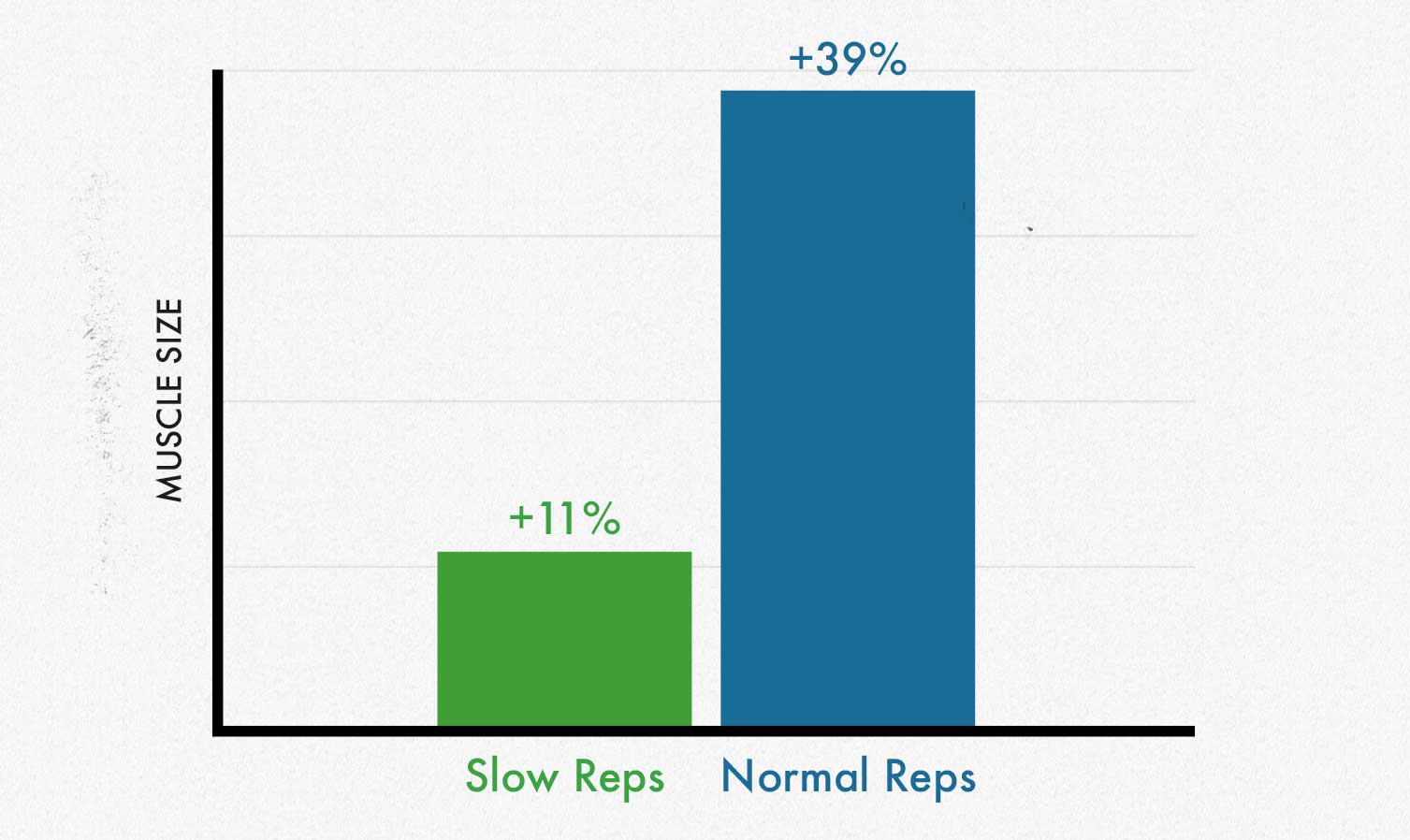
For instance, in this 2012 study by Schuenke and colleagues, the group lifting slowly gained less than a third as much muscle as the group lifting with a normal tempo (study). To be fair, though, they were lifting very slowly. It took them 10 seconds to lift the weight up. Most people who slow their reps down to improve their mind-muscle connection aren’t lifting that slowly, so losses in muscle growth wouldn’t be as severe (if they even exist at all).
Is Lifting With a Normal Tempo Better for Building Muscle?
If you lift with a normal tempo, you’ll be able to lift more weight in a given rep range, increasing the total amount of tension on your muscles every set. It’s great for gaining muscle size.
In a 2021 systematic review by Wilk and colleagues, they looked at every relevant study, and they found very little difference in muscle growth when doing reps lasting anywhere from around 2–9 seconds (study). That gives you quite a lot of freedom to experiment.
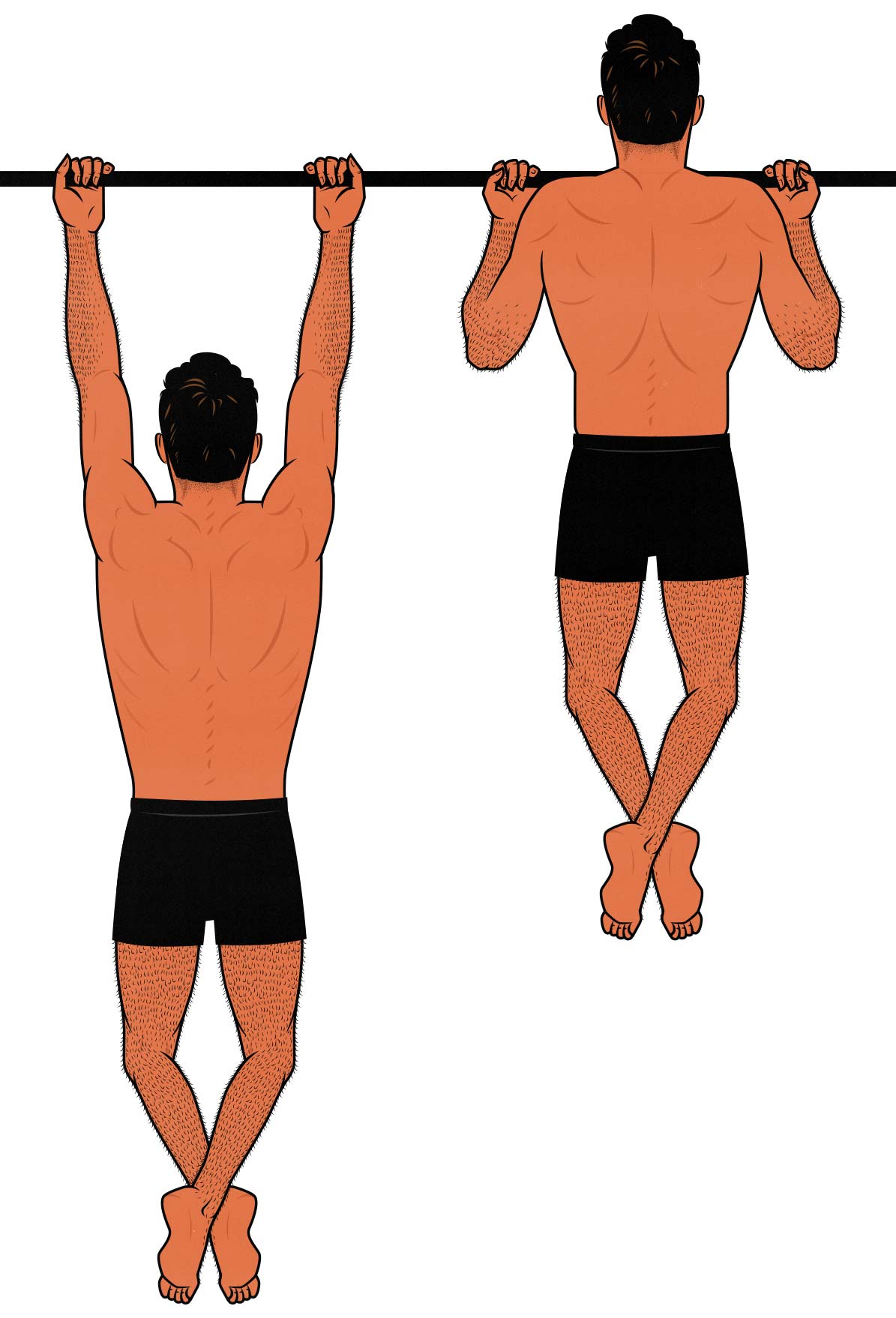
But that 2–9 second tempo doesn’t differentiate between the time we spend lifting the weight versus lowering it. If we dig a bit deeper, it looks like we might be able to get even better results if we lift the weights faster and lower the weights more slowly. That gives us the same total time under tension, but we’re spending less time lifting the weight, more time lowering it.
Is Lifting Explosively Better for Gaining Strength & Power?
Force is calculated by multiplying mass × acceleration. So one way to increase the amount of force on your muscles is to lift heavier weights. This is the idea underpinning heavy strength training. Another way to increase force is to increase acceleration—to lift the weights faster, more explosively.
If you lift the weights up as fast as you can, you can maximize force production by maximizing acceleration, fully engaging your muscles right from the beginning of your very first rep. This holds true even when lifting in moderate rep ranges. And when you learn to engage all of your motor units all at once, your maximal strength and speed go way up. You can lift heavier weights, jump higher, punch harder, and sprint faster.
This is the whole idea behind plyometrics and Olympic weightlifting. The idea is to teach explosiveness and power. The same is true in strength sports. You’ll see powerlifters doing “speed work” where they focus on lifting weights as quickly and powerfully as they can. In fact, even when powerlifters lift heavy weights in low rep ranges, they’re still trying to move those weights as fast as possible.
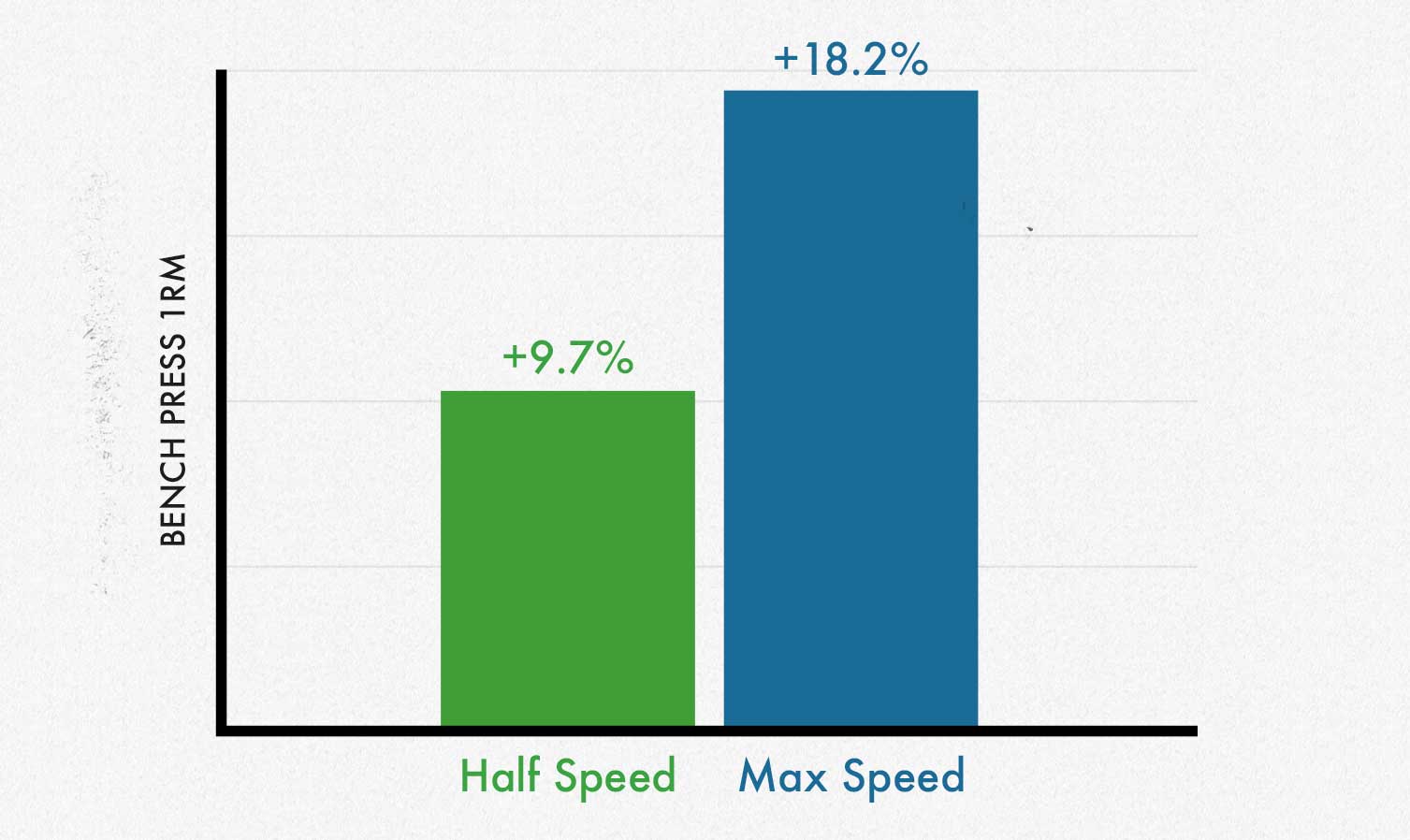
In a study by González-Badillo and colleagues, the participants lifting explosively added twice as much to their bench press 1-rep max as the group lifting with a steadier tempo (study). If you care about strength and performance, then, there’s a strong case to be made for lifting explosively.
What’s the Best Lifting Tempo for Gaining Muscle Mass?
If we look at the overall body of research, it seems that intentionally lifting slowly reduces performance, reducing total tension on your muscles every set, and thus reducing muscle growth. But if you lower the weights a little bit more slowly, performance doesn’t decrease by nearly as much (if at all). You’ll still be able to lift heavy weights, and you’ll also get some extra time under tension, which might improve muscle growth.
We also see some pretty nice strength and performance benefits from lifting explosively. But how does lifting explosively affect muscle growth? After all, lifting explosively means lifting with more momentum. Plus, it can make it harder to focus on establishing a strong mind-muscle connection. You become more focused on performance than tension and connection. That’s blasphemy in the bodybuilding world. They’ll kick you right out.

But lifting explosively may actually increase muscle growth by quite a lot! There isn’t much research to confirm these findings, so I wouldn’t put too much stock in it yet, but in a study by Nogueira and colleagues, the group lifting more explosively got twice as much biceps growth as the group lifting with a steady tempo (study).
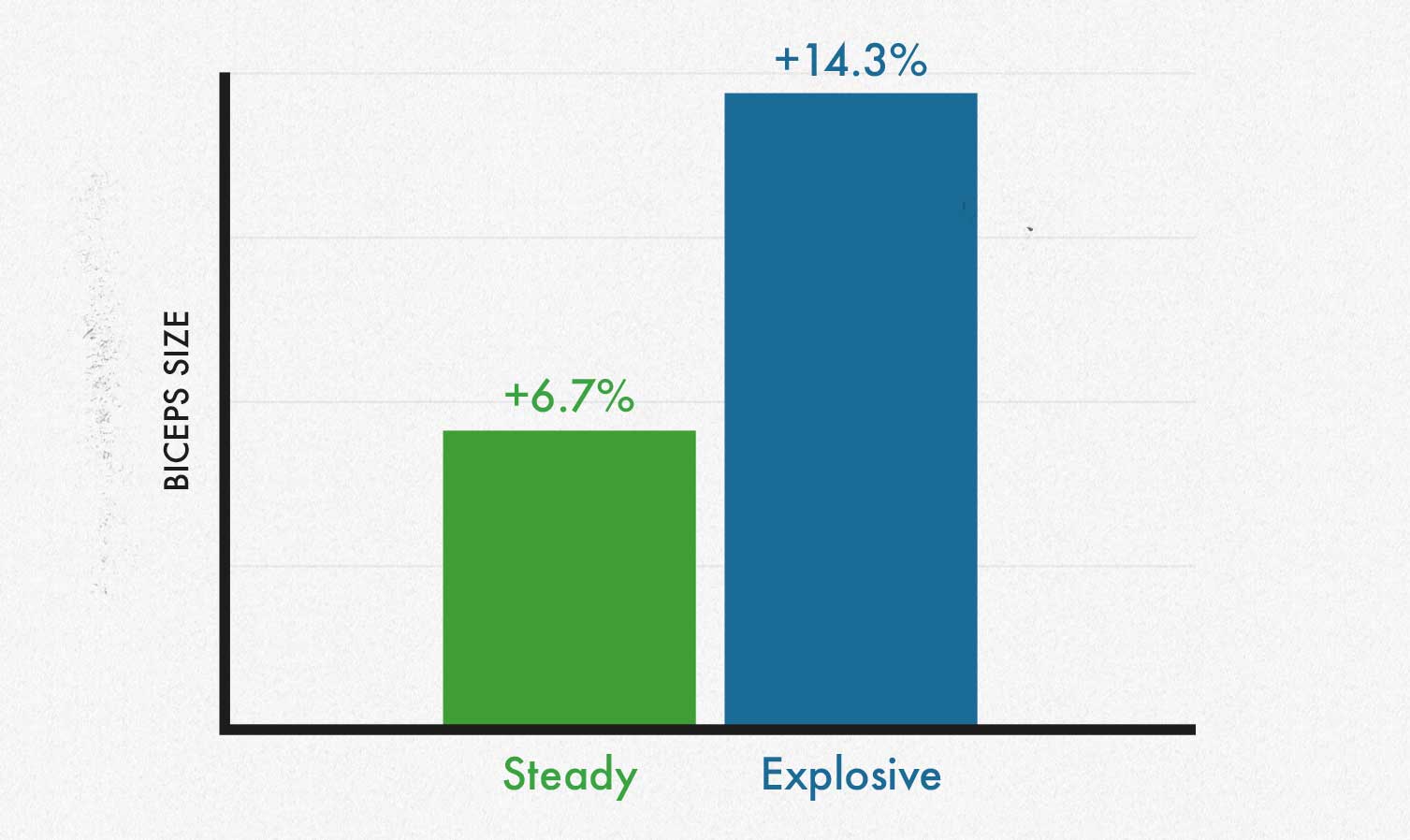
(The study measured muscle growth in both the biceps and quads. The group lifting explosively gained twice as much muscle in their quads, too. But it was a small study. The difference in quad size didn’t reach statistical significance.)
This study raises the question of why lifting explosively might be better for building muscle. Well, first of all, you get way better muscle activation. You can engage all of your muscle fibres right from the beginning of the first rep of the first set, even when lifting in a moderate rep range.
Consider the idea of “effective reps,” where only the hard reps at the end of a tough set are said to be challenging enough to provoke muscle growth. But if you lift explosively, you can put in your full effort right from the beginning of every set, potentially solving that problem.
Another possible advantage is that lifting explosively improves the strength curve of most free-weight exercises—squats, bench presses, deadlifts, chin-ups, dumbbell rows, overhead presses, barbell curls, and so on—challenging our muscles at longer muscle lengths.
Plus, lifting explosively tends to maximize performance. It could be that maximizing your performance is better for stimulating muscle growth, not just for developing strength and athleticism.
Summary
The main reason people lift explosively is to gain more strength, power, and athleticism, but there’s some research showing that it’s better for building muscle, too. As a rule of thumb, we tell people to think of accelerating the weight up—to think of lifting athletically and explosively. That way you gain strength and athleticism, and you maximize your rate of muscle growth. You don’t need to do all your sets this way, and it’s okay to keep things slow while learning a new lift, but it’s a great default lifting tempo.
Then when it comes to LOWERING the weight, just keep it under control, guiding it back into a strong starting position. You might stimulate more muscle growth if you slow the weight down a little bit, but don’t slow it down so much that it hurts your performance.
It seems that the most favorable is a combination of slower eccentric movements, paired with faster concentric movements.
Wilk and colleagues, systematic review
That’s the tempo that lines up best with the research, it’s what Marco used when coaching professional and Olympic athletes, it’s how I’ve gained nearly 70 pounds, and it’s how we’ve helped thousands of skinny clients bulk up as quickly as possible over the past decade.

Explode the weight up, then lower it back down under control so you can explode it back up again. Just don’t heave or jerk the weight when you aren’t supposed to. That can shift the emphasis away from the muscles you’re trying to train.
And, of course, you still need to lift with good technique.

Alright, that’s it for now. If you want more muscle-building information, we have a free bulking newsletter for skinny guys. If you want a full foundational bulking program, including a 5-month full-body workout routine, a diet guide, online coaching, and a recipe book, check out our Bony to Beastly Bulking Program. Or, if you want a customizable intermediate bulking program, check out our Outlift Program.

